A letter to Zaobao highlights Bukit Brown’s heritage value to Singapore and tourism (18th July, 2013)
Translated by Desmond Sham
Singapore is a young country without many interesting built up heritage.
Bukit Brown records the rich history of Singapore since its founding. It also has a unique Nanyang style tombs rarely seen in other places. It is a rare cultural heritage with character, and can be developed into an alternative tourist spot.
Cemeteries of monarchies in the world, the Chinese cemetery in the Philippines and Chin Pao San in Taiwan where the wealthy are buried, have become famous tourist spots.
Although there are no Kings and high officials buried in Bukit Brown, there are Chinese nationalists in the Qing period and the pioneers who contributed to Singapore. The whole cemetery is colourful and very diversified.
Besides different Chinese tombs of different dialect groups, there are also Western and Japanese tombs. Tombstones are written not only in Chinese, but also English, Dutch, Japanese, Thai as well as the colloquial language of the Peranakan. This is very rare in other places, and is attractive to both locals and foreigners who love history.
Singapore is a multiracial country. A “cemetery-themed” museum can be built next to the cemetery to illustrate the history of cemeteries and funeral cultures of different ethnic groups in Singapore. I’ve seen a cartoon illustrating the Emperors’ tombs and funeral rituals in China. It’s very interesting and popular with tourists. These can also represent the multiracial history and culture of Singapore, and bring new life to its heritage. It can also be a place for the citizens especially the younger ones, to gain knowledge about other ethnic groups. This will make the cemetery more meaningful.
There are many talented people in Singapore. I hope the administration can re-plan at least to preserve a large piece of Bukit Brown, and not let this valuable place with rich history be destroyed.
Letter writer : 梁舒朗
将武吉布朗发展为历史旅游景点
新加坡是一个年轻的国家,有特色的历史遗迹不多。
武吉布朗记载着新加坡从开埠至今的深远及丰厚的历史,且具有独特
世界各国的帝皇将相陵墓,菲律宾的华人坟场,台湾一些大富大贵人
虽然武吉布朗埋葬的不是帝王将相(当中有一些是满清时代中国的爱
除了大部分不同方言族群不同格式的中式坟墓外,也可见到一些西式
新加坡是一个多元种族的国家,如果能在坟场旁建造一个博物馆,以
新加坡不乏有才干的人士,希望有关当局能重新策划(至少能保留大
梁舒朗
Tan Seng Chong (1874-1927)
by Dr. Lai Chee Kien
Tan Seng Chong (1874-1927), architect and director of Tan Seng Chong & Co., was listed as the first Chinese person to commence his own architectural practice in Singapore (i.e. as sole proprietor). Born on the island when it was part of the Straits Settlements in 1875, he was educated at Raffles Institution before joining the Singapore Municipality as an apprentice in 1897.
After serving there for 13 years, he commenced private practice in 1910. His office on the top floor of 14, Raffles Quay employed an assistant manager (E.D. Cashin), a chief draughtsman (H. Amin) and an overseer of work (Syed Hamid). The firm also billed itself as surveyors and building agents, and undertook a range of work including the design of the Empire Cinema at Neil Road (1916), works on a Chinese temple (1919), factories, depots and industrial structures.
He designed many bungalows, houses and stretches of shophouses including seven (Nos. 4 – 16) at Emerald Hill Road. His clients included many notables of the day, like Lim Peng Siang, Tan Kah Kee, Tan Chay Yan and Eu Tong Sen. Tan Seng Chong is buried with wife and their tombs are in the way of the proposed highway.
Stake numbers : 1945 and 1946 at Hill 2 in Bukit Brown

The twin tombs of Tan Seng Chong (1945) and wife (1946) in the background, with students documenting the staked graves (photo by Lai Chee Kien)
The Rojak Librarian has more on the life and times of Tan Seng Chong and his family.
Dr. Lai Chee Kien is an architectural historian and Assistant Professor at the Department of Architecture, National University of Singapore
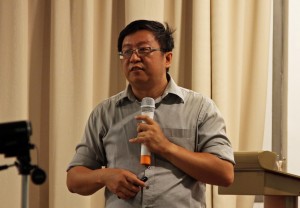
Lai Chee Kien at a recent talk he gave on the material culture of Bukit Brown (photo by Bianca Polak)
You can view Dr Lai’s talk on the material culture of Bukit Brown here
As part of Bukit Brown : Our Roots, Our Future, a series of talks were programmed to enrich the exhibition which was held at the Chui Huay Lim Club, the co-organiser of the exhibition.
Here are the video recordings, released with kind permission from the speakers.
Sunday, 20th June 2013
Mok Ly Yng – A Historical Survey Of Bukit Brown
This historical survey of maps reviews the geography and distribution of cemeteries in Bukit Brown and its environs. It also traces the development and changes of the area from the mid 19th century to the 21st century.
Speaker’s bio: Mok Ly Yng is a freelance GIS consultant and map researcher. He received his M.Sc. in Geographical Information Systems (GIS) from the University of Edinburgh. He had worked previously in the Mapping Unit and the National Archives of Singapore.
Dr Ho Hua Chew – The Ecological and Biodiversity Importance of Bt Brown.
Having become forested through several decades of wild vegetation growth after being degazetted as a cemetery, the area generally has become attractive to many wildlife, in particular the forest birdlife. The talk will focus on the important and interesting forest wildlife that is recorded in the area.
Speaker’s bio: Dr Ho Hua Chew is the Vice-chairman of the Conservation Committee of the Nature Society (Singapore) as well as a Council member of the Society. He has been involved in conservation projects for the Society as a volunteer since the late 80s, including the formulation of Sungei Buloh conservation proposal and the Master Plan for Nature Conservation in Singapore.
Charles Goh – All things paranormal in BBC
Singapore’s own ghost buster, shares stories from beyond the graves, and findings from his investigations in paranormal activities.
Speakers bio : Charles Goh is the founder of the Asia Paranormal Investigators (API) which is a paranormal research based Society based in Singapore. API that strives to systematically analyze any strange occurrences happening in Singapore and around the region. Charles a trained guide with STB credentials has conducted many night tours at Bukit Brown
A very big THANK YOU to Brownie Ang Hock Chuan for videoing the talks!
Despite the the threatening clouds, some 50 people turned up for the special tour to Ong Sam Leong with guest participant, John Hunt, author of ” Struggling Through Strength.” On the way to the Ong’s family cluster, it drizzled but cleared for a while, when it came time for John to share his insights of the grime lives of the coolies, who worked on the phosphate mines on Christmas Island. He held his audience rapt with the minutiae of the harsh environment where fresh water was scarce and the diet meager. The coolies worked 9 hour days, six days a week and were often called upon to undertake “emergency” overtime when the ships called, and they had to quickly load up as many tons of phosphate. The mineral was in demand as it was used in the manufacture of fertilisers in the region.
Later in the afternoon, standing room at Select Books where John spoke further on what his research uncovered about life across the spectrum of classes on Christmas Island.
From participant James Tann : Last Saturday, I finally joined them on one of their free guided tours through Bukit Brown Cemetery.I would encourage anyone who has not been there to join one of their weekend tours. It would be an eye opener for many and you will feel the dedication, the enthusiasm and passion of the ‘Brownies’. I dedicate the following video that I made to them for all their efforts to preserve this part of our country’s heritage.
For more on the tour, the Rojak Librarian ‘s report here.
——————————————————————————————————–
Ong Sam Leong, made his fortune on Christmas island by recruiting “coolies” from Kwantung Province to work on the phosphate mines.
John Hunt, author of “Suffering Through Strength” – the story of Christmas Island (1899 – 1948) emphasizing the Chinese coolie experience – will be a guest participant and share some insights of their hardships at the Ong Sam Leong family cluster., where we will end our tour of Hill 3.
This tour is in support of a talk co-organised by the Singapore Heritage Society and Select Books by the author at 3pm the same afternoon at Select Books.
Tour Details:
Time : 9am -11.30 am
Meeting Place: Under the large and beautiful, and possibly endangered rain tree, at the Roundabout after the main gate on your left.
Bukit Brown. More than a cemetery. More than a Chinese cemetery. Come discover our heritage and history, while enjoying the habitat.How to get there and handy tips here: http://bukitbrown.com/
If you have a FB account, please click ‘Join’ on the FB event page to let us know you are coming, how many pax are turning up. Or just meet us at the starting point at 9am. Brownie Code: We guide rain or shine.
Don’t forget to bask in the peaceful surrounds, and also chat with your guides and make friends with other participants. We are amateurs and volunteers, but we are passionate and serious about what we do at Bukit Brown, and we encourage sharing of knowledge.Here is a map of the grounds:
http://bukitbrown.com/
From North: Go to Marymount MRT and walk to bus-stop #53019 along Upper Thomson Road. Take Buses 52, 74, 165, 852, 855
Alight 6 stops later at bus-stop, #41149, opposite Singapore Island Country Club (SICC), Adam Road. Walk towards Sime Road in the direction of Kheam Hock Road until you see Lorong Halwa.
From South: Go to Botanic Gardens MRT and walk to bus-stop #41121 at Adam Road, in front of Singapore Bible College. Take Buses 74, 93, 157, 165, 852, 855. Alight 2 stops later at bus-stop, #41141, just before Singapore Island Country Club (SICC), Adam Road. Cross the bridge, walk towards Sime Road, follow the road until you see Lorong Halwa.
By car:
Turn in from Lornie Road, to Sime Road. Then, turn left into Lorong Halwa.
Parking space available at the largish paved area near the cemetery gates.

The exhibition Bukit Brown : Our Roots, Our Future was officially opened by Ms Jane Ittogi Shanmugaratnam, Chair of the Singapore Art Museum, on the evening of 29 June, 2013.
Ms Ittogi, who had visited Bukit Brown with the Brownies in March 2013, shared her views and impressions. She spoke at length of the potential of its material culture for scholars. In particular, Bukit Brown’s preservation may rest on weighing the opportunity cost, its community value, and its universal value, she said.
Raymond Goh representing All Things Bukit Brown made an impassioned speech, sharing the significant discoveries which have emerged only in the last two years.
Photos of the opening and tour of the exhibition can be found here
Special Thanks to Ang Hock Chuan for the videography and our official photographers: Gan Su Lin & Bianca Polak
Photos of the opening and tour of the exhibition can be found here
Two strangers met for the first time at Bukit Brown this morning and found out they were related. Salma Khoo, President of the Penang Trust, was on a private tour guided by some Brownies when she met Edmon Neoh-Khoo. When 2 Khoo(s) meet, they talk ancestry, especially when Edmon can trace his ancestry back to Penang. Lo and behold! They found they are uncle and niece. You could say it was a morning drizzled with blessings!
On the sidelines of the reunion, Brownie Peter Pak who was at Bukit Brown to lead a tour was chuffed to come face to face with someone he had admired for a long time
“Today I am fortunate and honored to have met Khoo Salma (in the middle) who came down all the way from Penang to visit Bukit Brown. She is the President of the Penang Trust, owner of publishing company Areca Books and author of many many heritage books, which some I own & have read: Kinta Valley, Raja Bilah and the Mandailings in Perak,Streets of George Town, Penang. ” (Peter Pak)
Lianhe Zaobao (zbNOW) 10 July, 2o13 : Commentary by Ng Siang Ping 黄向京
Translated by Ang Yik Han:
A few months ago, I visited Bt Brown. I was surprised by the knowledgeable volunteer guide who led a group of more than 10 enthusiastically, explaining while resting on a stick, wearing a hat and with a towel to soak his sweat.
This group of around 20 volunteers come from a range of diverse professions. They gather on most weekends at the cemetery, taking turns to lead English and Mandarin speaking groups. Schools, organisations and foreigners have attended their tours, and they have guided a total of more than 6000 people so far. After their tours when they share generously with the public what they have learned from the tombs, they often get together for lunch and sessions of bonding and companionship, helping each other to continue to collect and record information about the cemetery. Their FB group “Heritage Singapore – Bukit Brown Cemetery” has a membership of 2636 members. (Another group “SOS Bukit Brown” has 1148 members.)
The “Bukit Brown: Our Roots, Our Future” exhibition at Chui Huay Lim is a presentation of their research findings collected in their free time over the past two years. Some of the Brownies were also speakers during the talks. Due to their efforts and that of other parties like the Nature Society, interest in Bukit Brown has increased and it has become an attraction for nature and cultural tours.
Dr David Chng, who traversed the cemeteries of Singapore and Malaysia 30 years ago, mentioned during his talk that these youngsters are even more foolish than he was then. However, touched by their stubborn persistence, he has agreed to conduct the second public talk of his life.
In this society where most spend their life working and taking care of their families, the time and money dedicated voluntarily to the cemetery by the Brownies cannot be measured. It is imbued with a sense of local identity, and a persistent belief that treasuring the past is protecting the future, like a pebble thrown onto a lake, creating waves which spread and inspire more people to become “Brownies” in the wider sense, to care about the cemetery and other public issues.
And when there are more “Brownies” who care about this land in which they live and have grown up in, giving voice to the past and the future, one’s heart is warmed, and we can see hope.
- Dr. Lai Chee Kien showing how the proposed highway(in white) would cut through the entire cemetery. The yellow patches are the 4,000 graves affected. (photo Victor Lim )
Dr Lai Chee Kien shared Bukit Brown ‘s heritage, habitat and history on channel 8’s Good Morning Singapore today. Covering the poetry of Khoo Seok Wan and Tan Ean Kiam who both penned their own epitaphs on their tombs , he stressed how the Chinese speaking community can connect with the diversities of histories of the region. He also highlighted the many Peranakan tombs in Bukit Brown.
You can catch his interview which was part of a discussion on travel attractions here @ aound 18:00.
Dr Lai Chee Kien, Assistant Professor in the Dept of Architecture (NUS), is part of the team documenting the graves which have to make way for the highway in Bukit Brown.
acknowledgement to Goh Hiap Leng from NTUC Media , 《生活》月刊2013年7月号 (“Sheng Huo” Jul 2013).
(Source: 文章来自《生活》月刊一三年七月号) (“Sheng Huo” Jul 2013)
Abstract of feature, translated by Raymond Goh:
“Ever since the news that Bukit Brown is to give way to a new highway, many people are concerned that the cultural heritage in Bukit Brown would disappear in line with further developments. Thus, there are people who suggest that Bukit Brown should be developed into an alternative tourist attraction, in order to preserve this precious heritage.
Volunteer guide Walter Lim felt that Bukit Brown reflect the history of Singapore being at the cross roads of the East and West, the centre of Nanyang, and the mother of the Chinese revolution, and can be a very worthy historical attraction which encompass all these cultural artifacts.
Another guide Yik Han mentioned that the history of Singapore does not start after independence, but before that, Singapore was already a prosperous place. Bukit Brown provides an invaluable resource for the study of pre-independence Singapore, and how our early pioneers helped to build the current foundation.
Bukit Brown is a snapshot of Singapore history, visiting Bukit Brown is like undergoing a lesson in history. Not only does it help in the immersion of new immigrants, but it also helped its citizens understand more about their roots. It is like a vast living museum and one can never see enough, and will keep on surprising and enlightening us with new facts if this proposal is accepted by the authorities.
The exhibition Bukit Brown: Our Roots, Our Future, co-organised by All Things Bukit Brown and the Chui Huay Lim Club was held between 29th June and 7th July 2013. With over 60 panels, it marked the biggest exhibition of its kind on Bukit Brown.
It was officially launched by Jane Ittogi Shanmugaratnam who gave the opening speech before touring the exhibition, which featured collections from descendants as well from private collections.
More photos of the exhibition here.

Jane Ittogi Shanmugaratnam being escorted by Chew Kheng Chuan and other members of the organising committee (photo Gan Su-Lin)
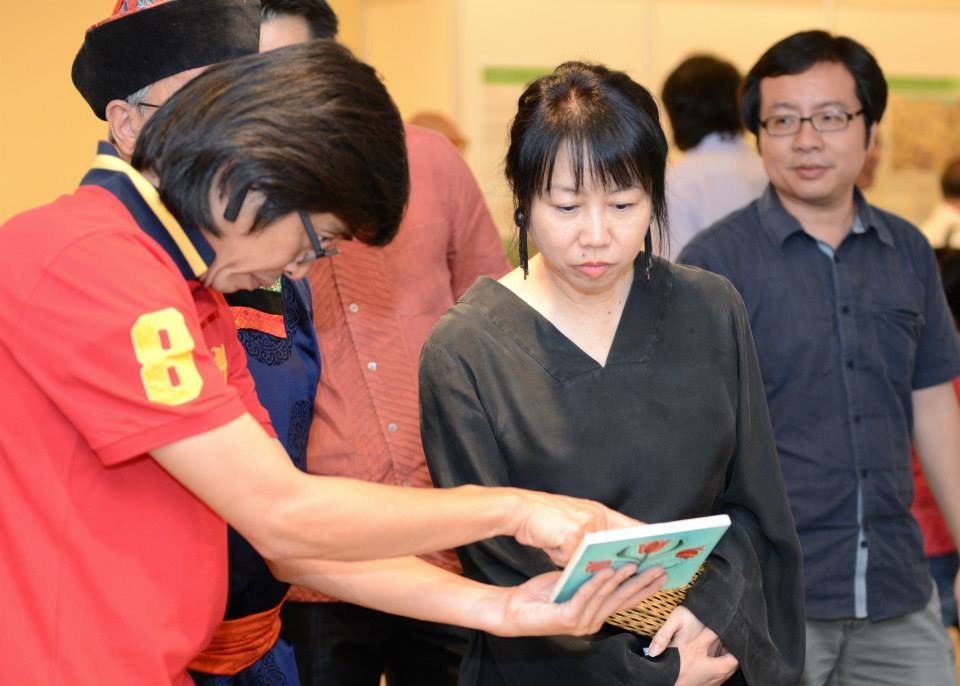
Victor Lim explaining the origins of Peranakan Tiles to the GOH as Ang Yik Han, who conceptualised the themes of the exhibition looks on (photo Gan Su-Lin)
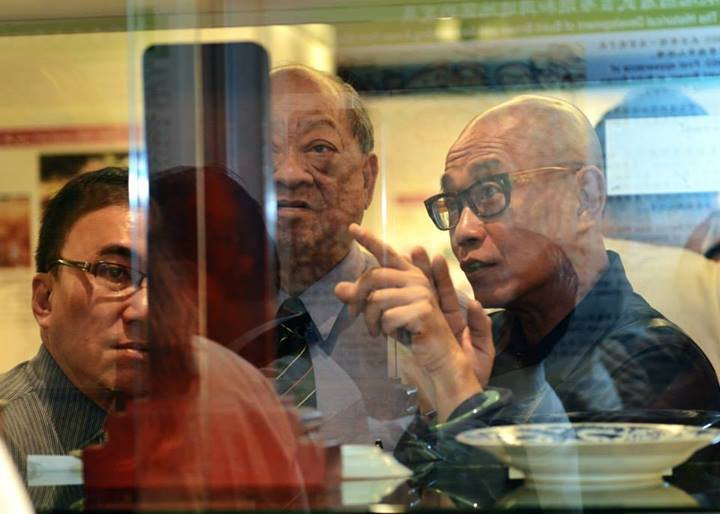
Chen Kezhen, artist and collector explains the intricacies of the inscriptions on Cheang Hong Lim’s ancestral tablet to Prof Phua of Chui Huay Lim (photo Gan Su-Lin)
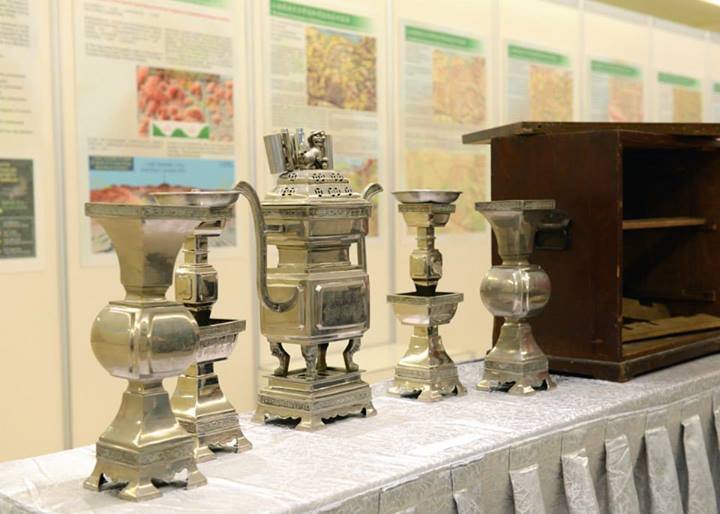
A set of ritual vessels previously used by a Teochew clan association when paying respects to their ancestors during Qing Ming and other occasions. The set of five consists of a censer, a pair of candlestick holders, and a pair of vases. (photo Gan Su-Lin)
Special thanks to our official photographers on opening night, Gan Su-Lin and Bianca Polak
About the Exhibition:
Our Roots, Our Future has 4 themes:
A) History – Bukit Brown’s place in the history of the evolvement of Chinese cemeteries in Singapore, its administration and topography.
B) Our Pioneers – their contributions to social and community services, education, commerce and banking; the role members of the Singapore chapter of Tong Meng Hui (China Revolution Alliance) and Republican Party played in the 1911 Revolution which changed the course of China’s history.
C) Tomb Culture – understanding tomb design, carvings and statuary in relation to feng shui principles and beliefs; the development of features unique to South East Asia such as Peranakan tiles and Sikh guards; inscriptions with different calendar systems, ranks , and insignia reflecting a century of political change of China and colonial powers.
D) The Living Cemetery – speaks to the potential of Bukit Brown for UNESCO World Heritage listing by showcasing the popular weekend heritage and nature tours conducted by volunteer guides, flora and fauna, student projects, refurbished tombs, Qing Ming and the community of tomb keepers.
Exhibition artifacts include a 3 D model of Bukit Brown, implements used in feng shui and a display of Peranakan tiles.
Complementing the exhibition was a series of talks which include presentations on cemetery research in Malaysia and Singapore culminating in a panel discussion, nature in Bukit Brown, personal accounts by descendants on rediscovering their roots and Qing Ming practices.
There was also a screening and talk by the producer of “Light on Lotus Hill” – an award winning documentary set against the backdrop of the Sino Japanese war about the Buddhist Abbot Venerable Pu Liang and the part he played in supporting the China Relief Fund and the recruitment of Nanyang volunteers who served on the Burma Road.
About the Organisers:
Chui Huay Lim Club established since 1845, has a rich history of 167 years. It was originally setup for Teochew businessmen to engage in business networking and recreational activities.
All Things Bukit Brown is the banner for a group of dedicated volunteers who conduct weekly public tours and independent research on the history, habitat and heritage of Bukit Brown Cemetery. They share their on-going learning journey in “Our Roots, Our Future”
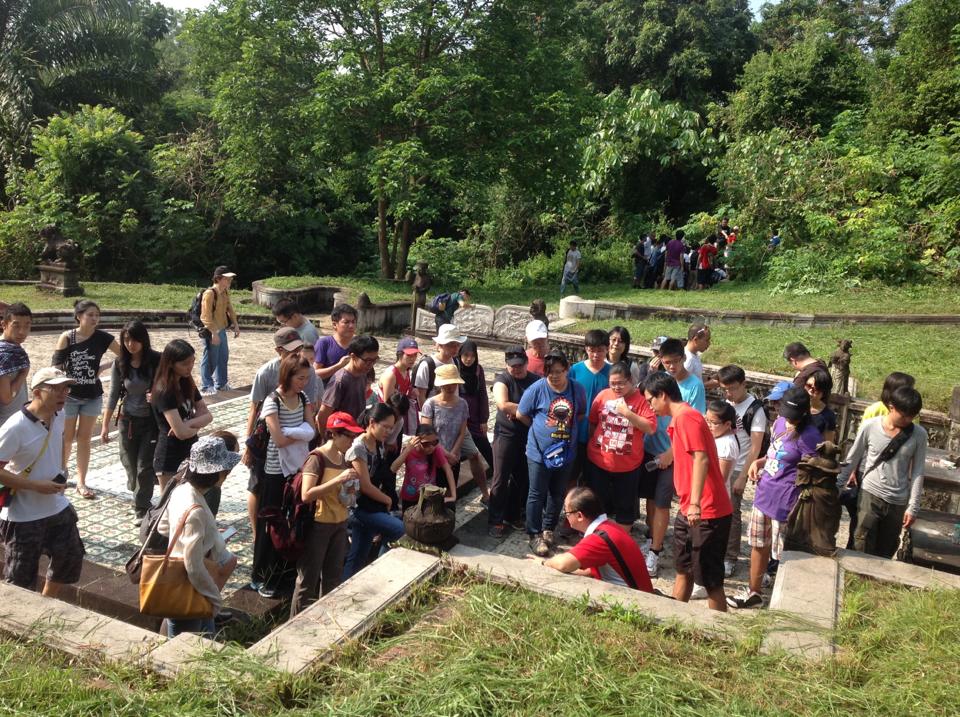

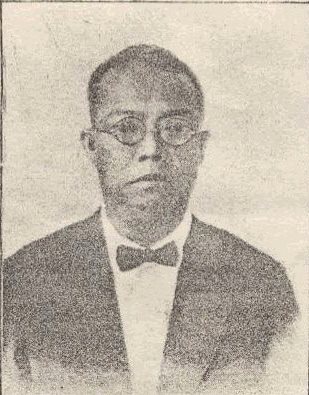
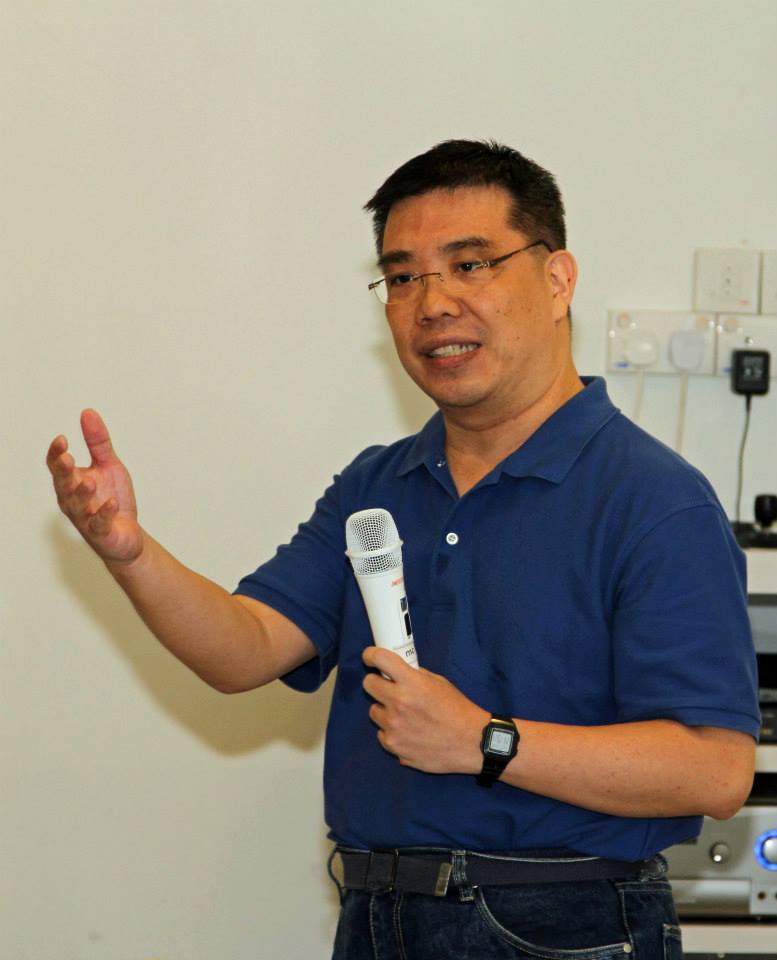
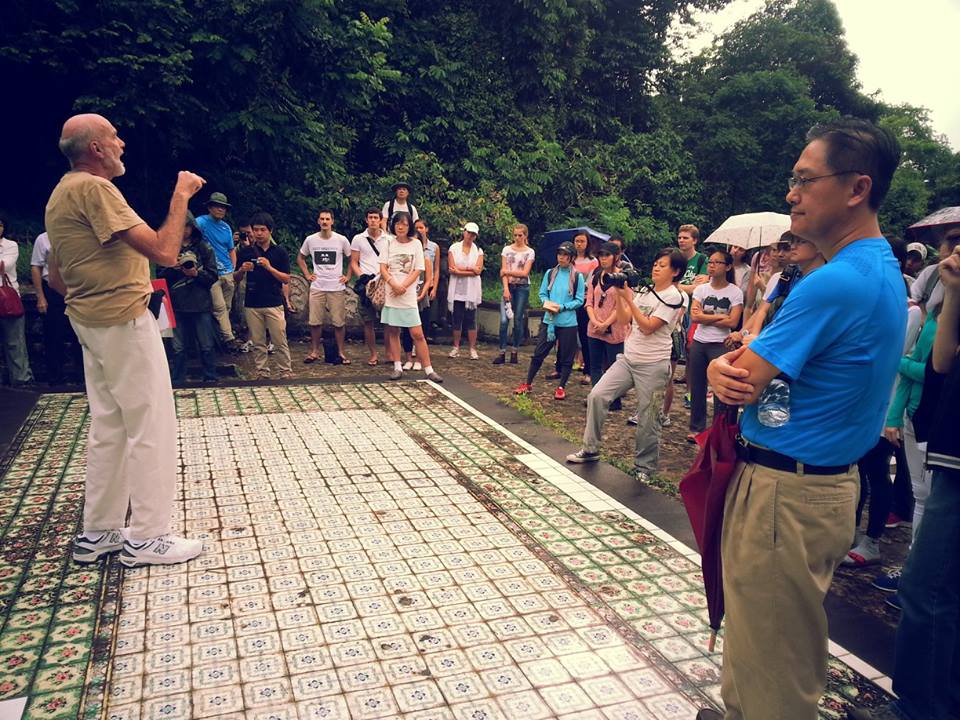
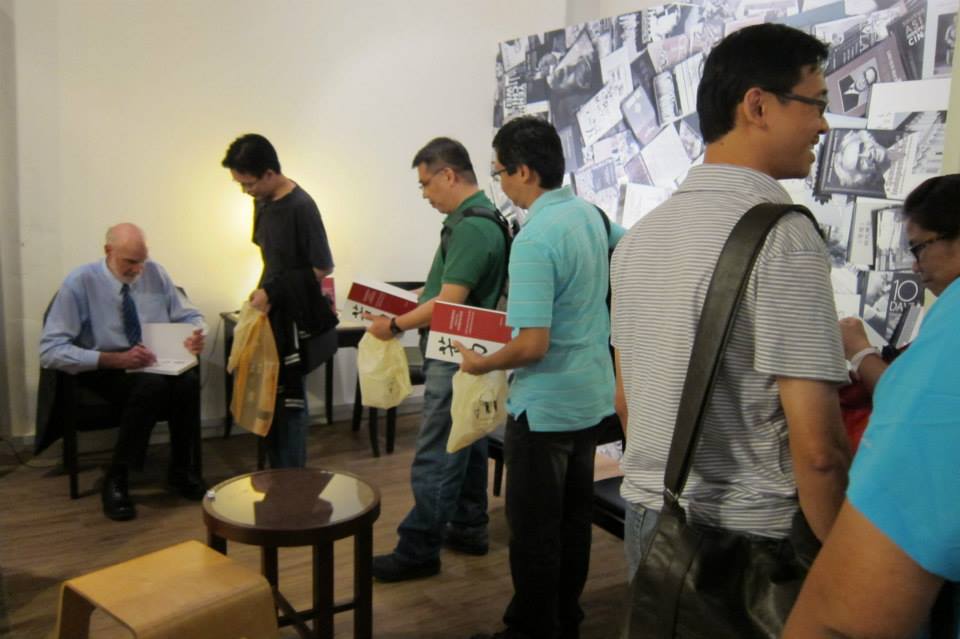
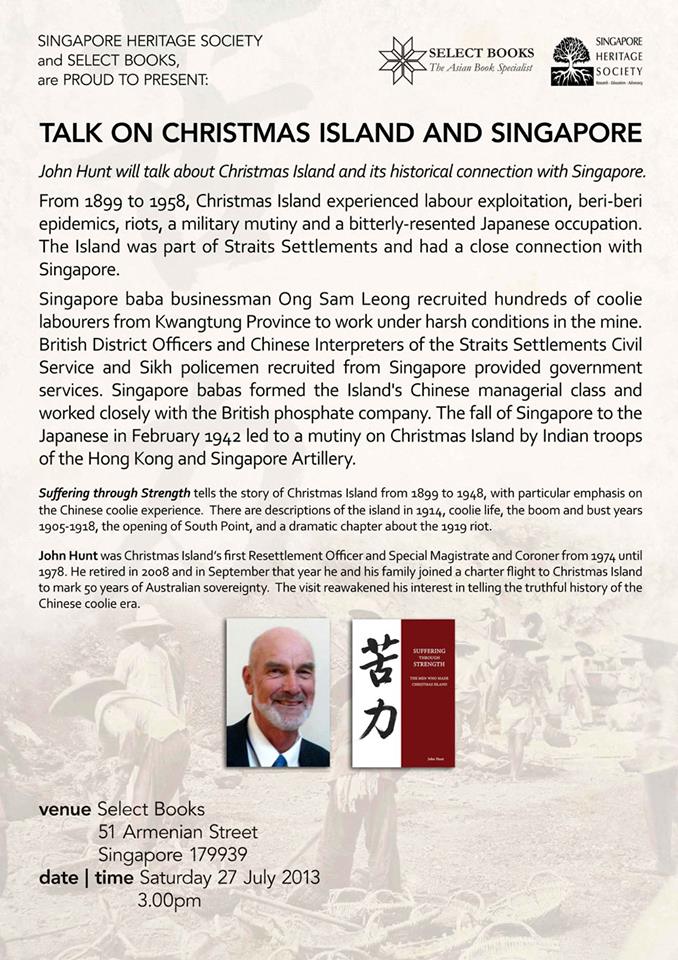

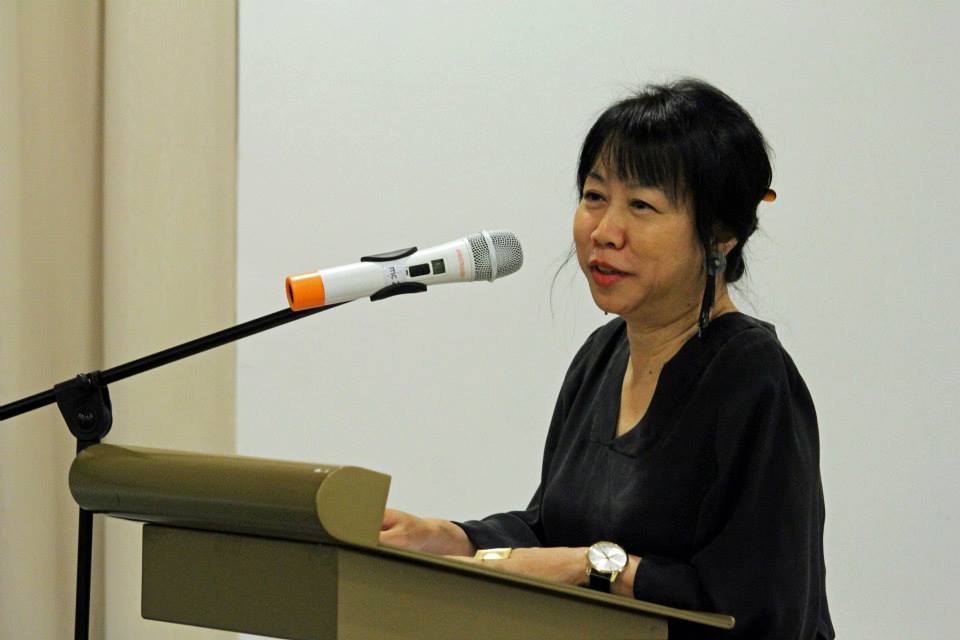
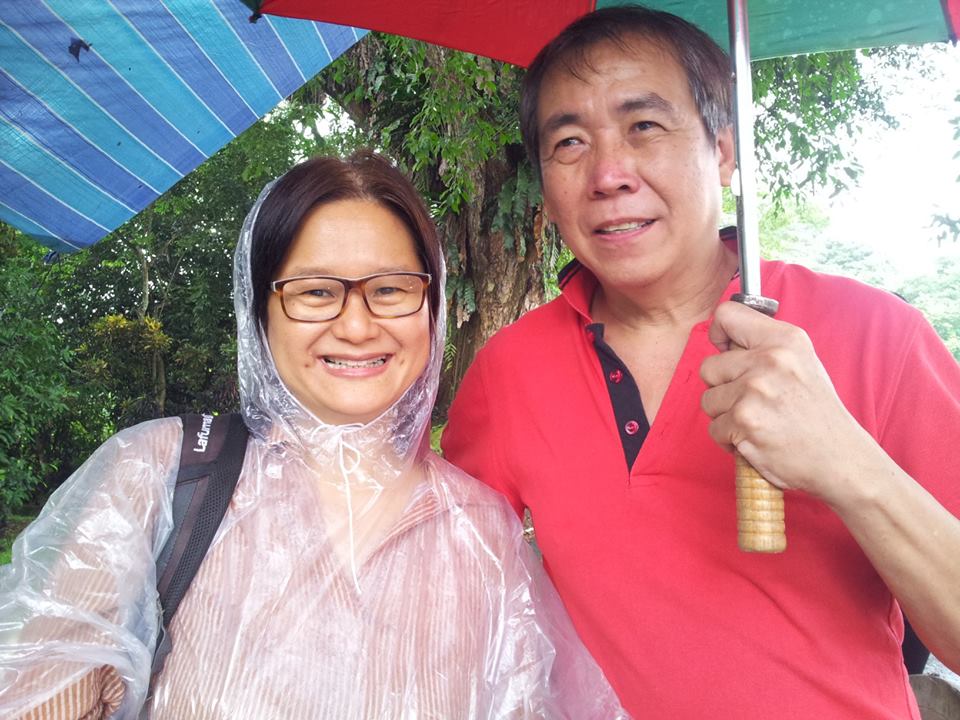
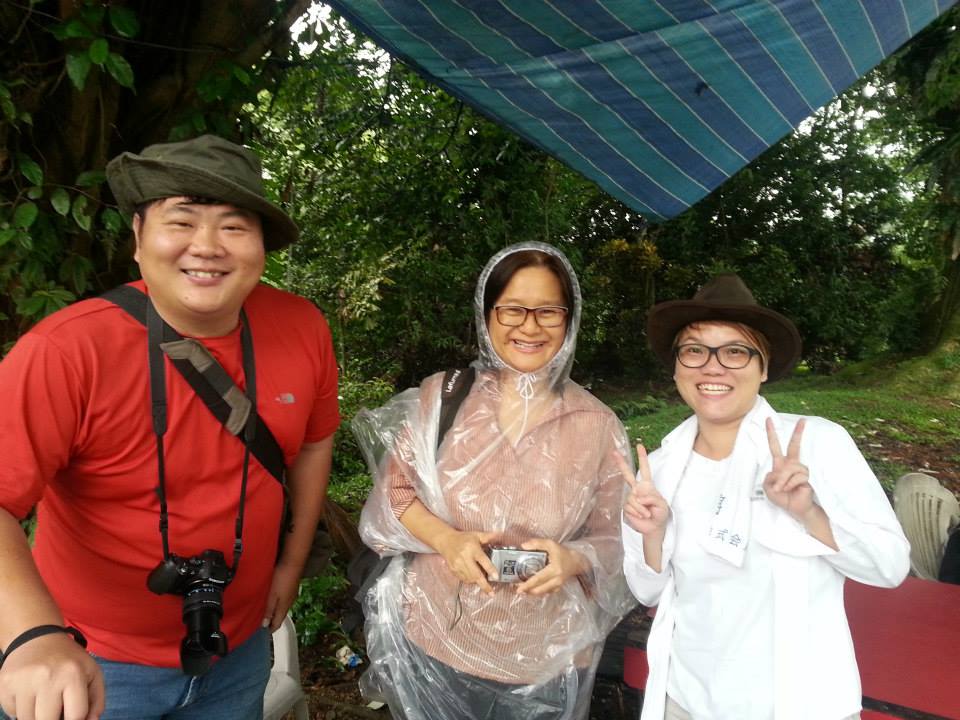
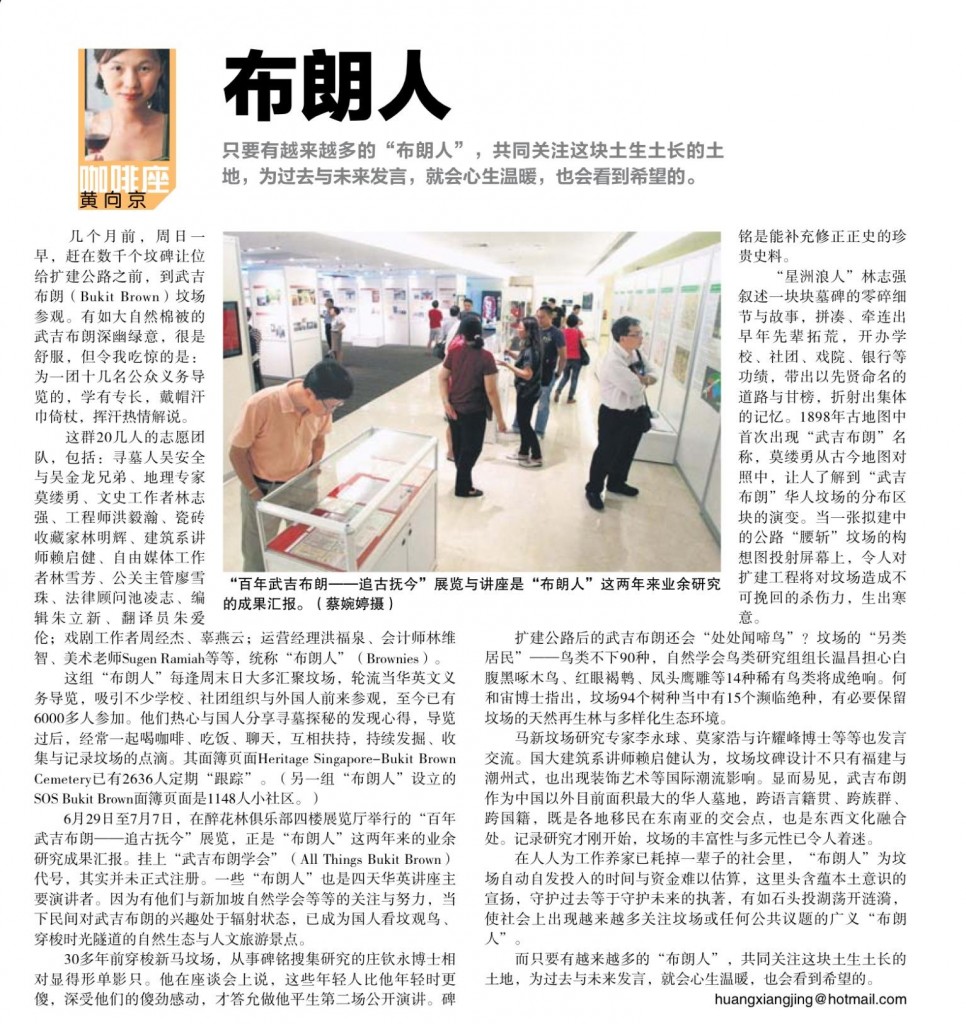
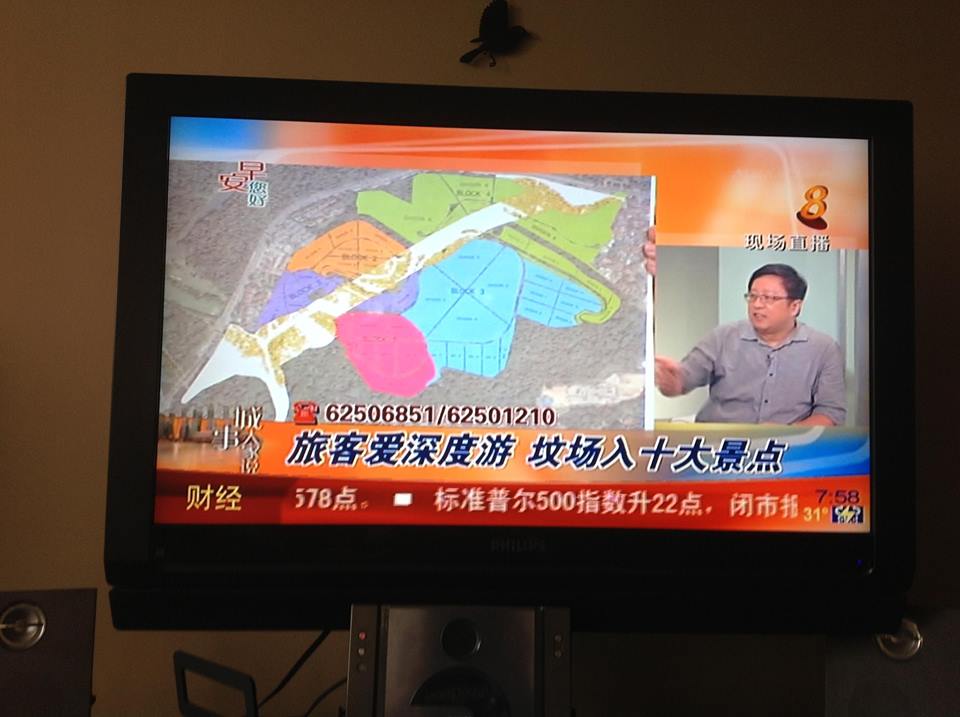
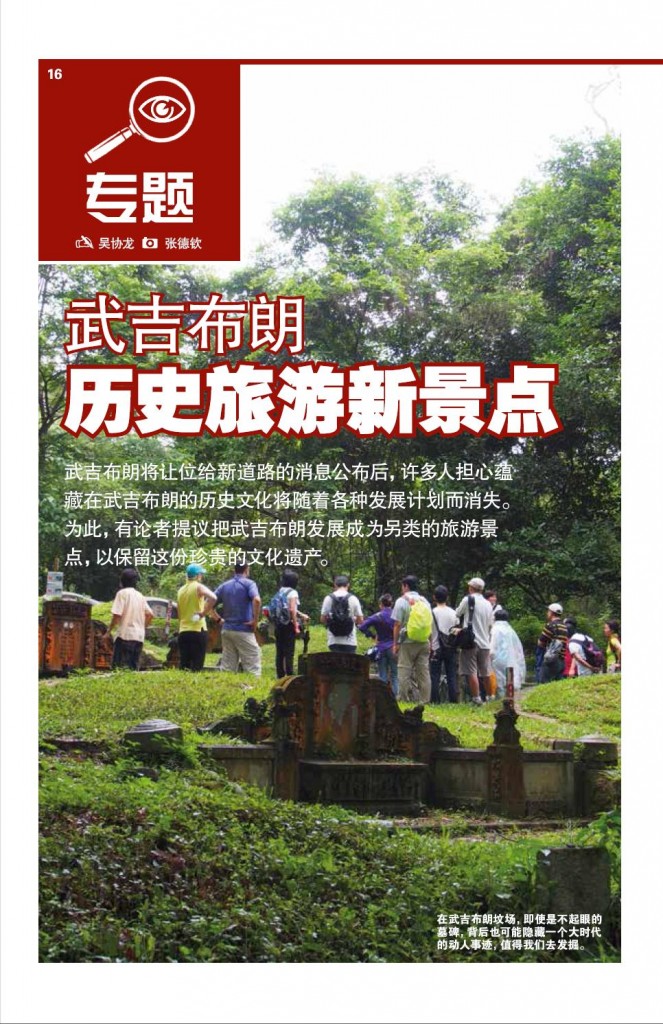

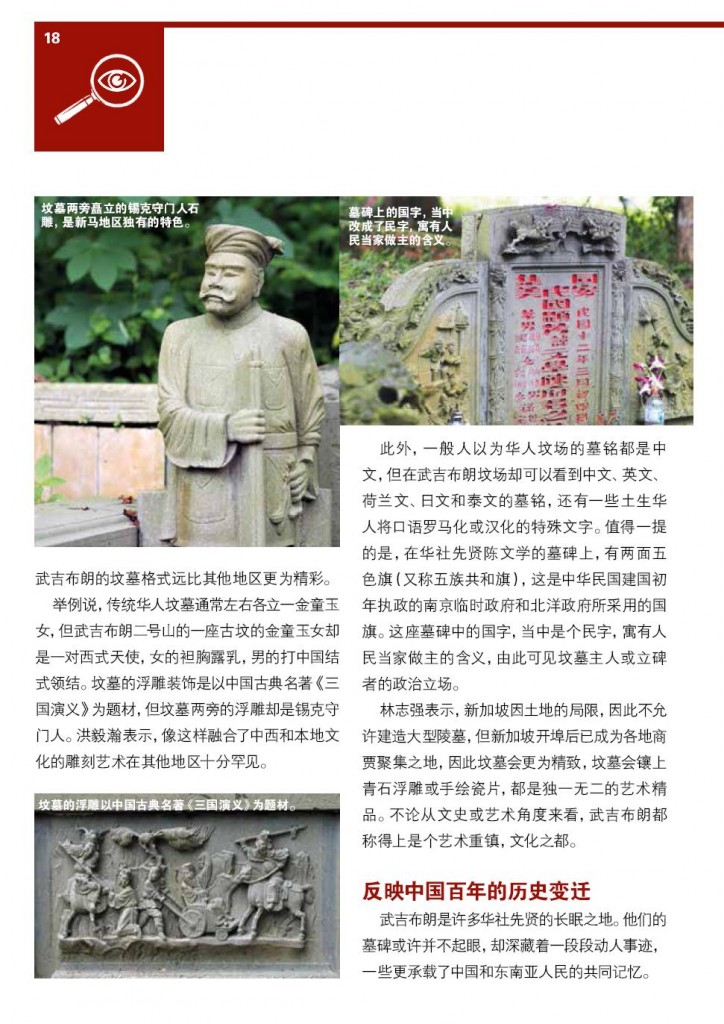
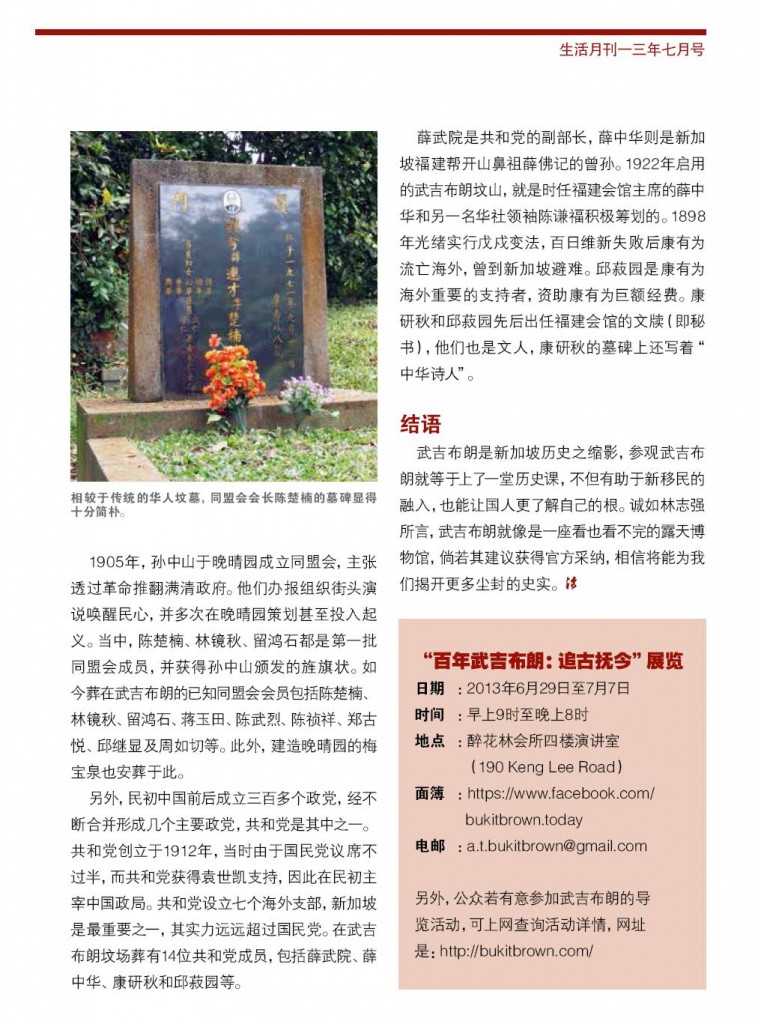



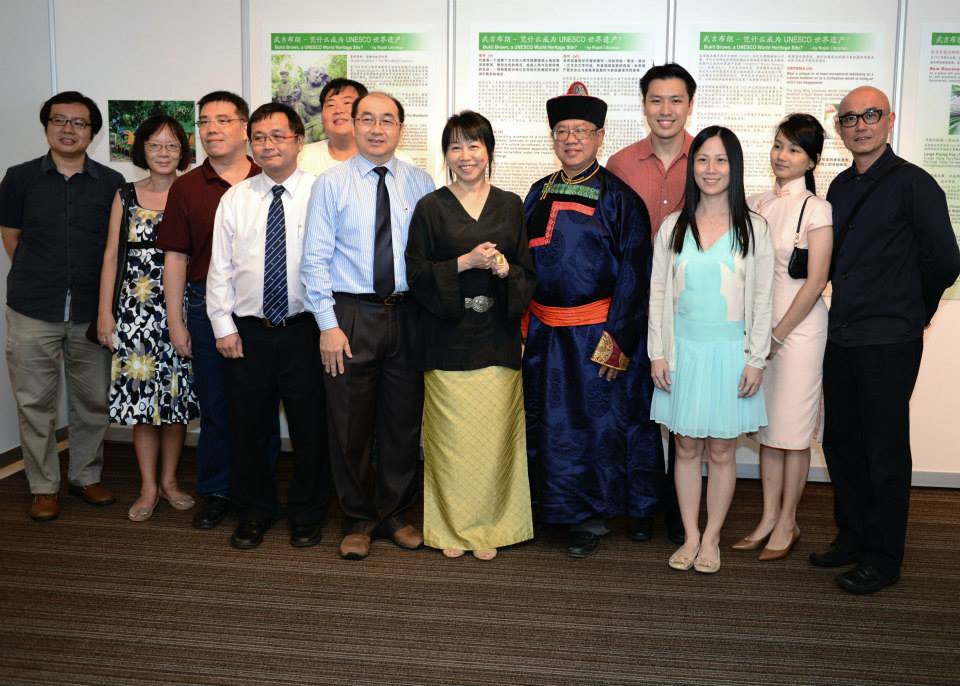

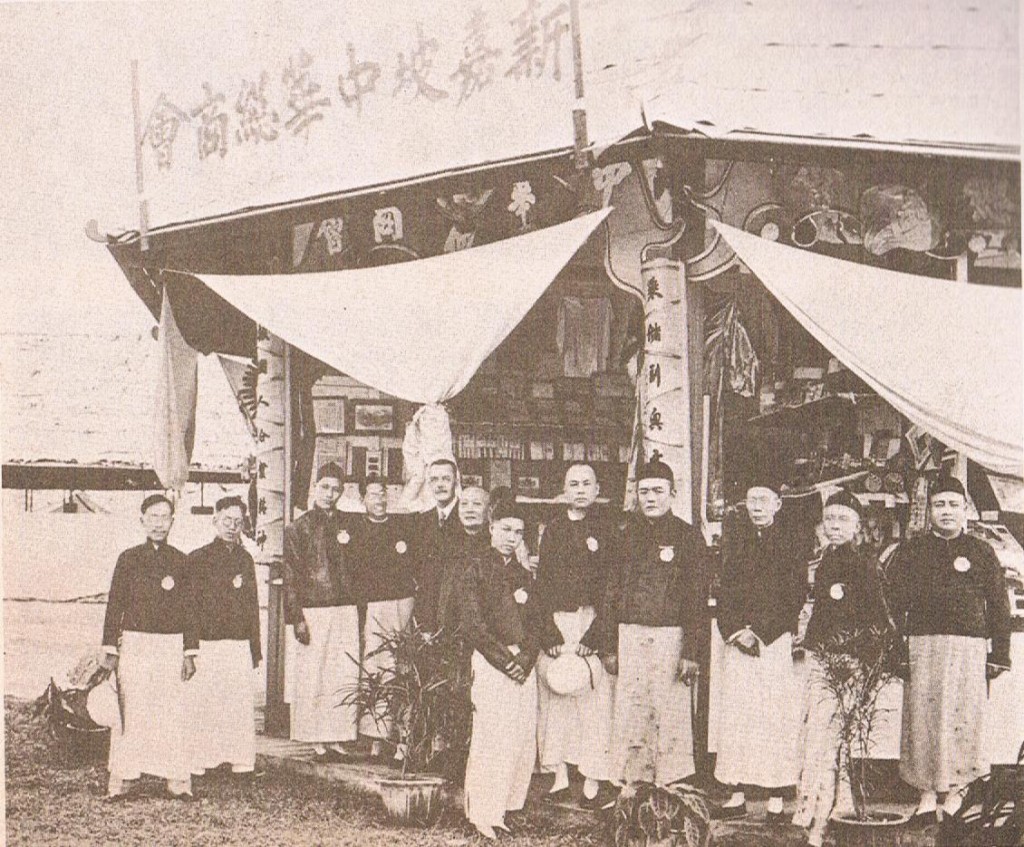
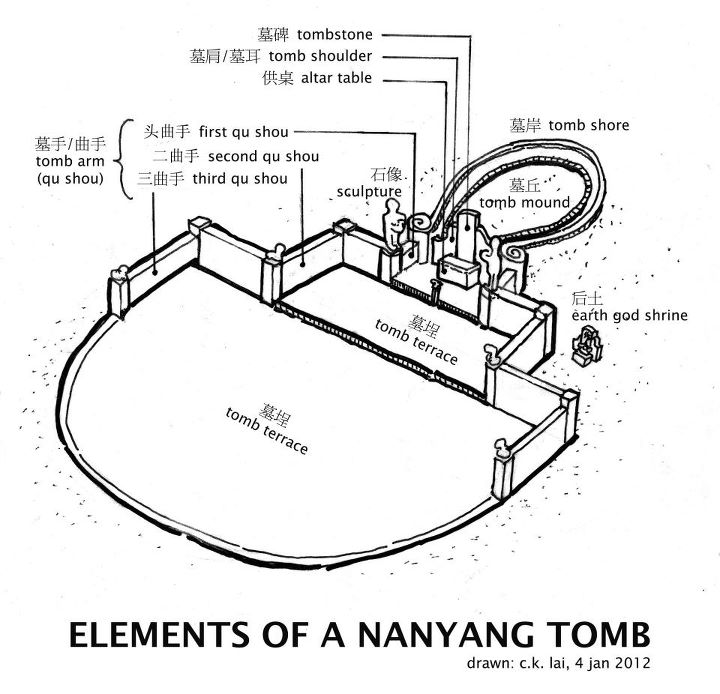
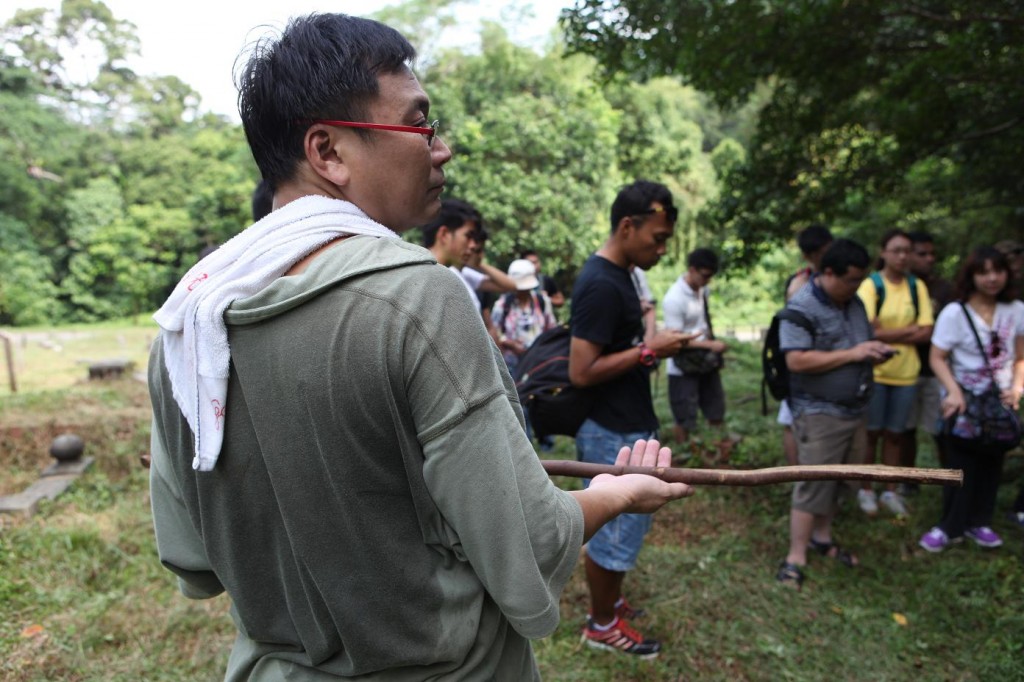


Recent Comments